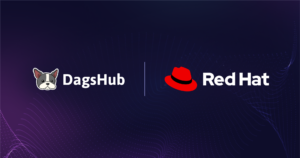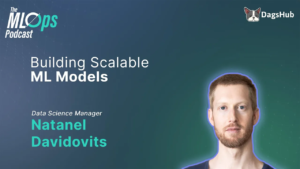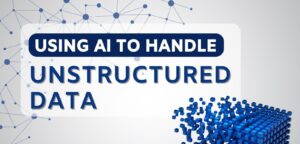This article will make you understand what text data labeling is, its importance in machine learning, and the different techniques used to annotate text efficiently. You will explore manual, automated, and semi-automated labeling approaches, along with modern strategies like active learning and weak supervision. Additionally, you will learn about the
This article will make you understand what text data labeling is, its importance in machine learning, and the different techniques used to annotate text efficiently. You will explore manual, automated, and semi-automated labeling approaches, along with modern strategies like active learning and weak supervision. Additionally, you will learn about the tools, frameworks, and best practices that ensure high-quality labeled data while maintaining security and privacy. Whether you are building AI models or improving annotation workflows, this guide will equip you with valuable insights to optimize the text labeling process.
We know large language models are trained with immense amounts of text. This text has been crucial for enabling a plethora of the capabilities they display. Few and zero-shot capabilities are truly fascinating but LLMs are not infallible when it comes to categorizing text, especially when the use case is very specific. Despite that evidence, LLMs have transformed the work and procedures of text labelling. They’ve reduced the need for massive labelled datasets and also created new demands for high-quality data.
Unsupervised learning has shown a big potential in large language models but high-quality labelled data remains the gold standard for AI systems to be accurate and aligned with human language and understanding.
A more formal definition of text labeling, also known as text annotation, would be the process of adding meaningful tags or labels to raw text to make it usable for machine learning and natural language processing tasks. It involves assigning categories, attributes, or specific metadata to different units of text.
It is common to see annotation processes focused on label types such as:
Sentiment (positive, negative, or neutral)Named entities (country, person, organization)Intent classification (request, complaint)Topic (sports, politics, economy)Part of speech (verb, noun, adjective)Custom categories depending on the needs.
As we mentioned before, it is obvious that using LLMs as labeling tools can help automate the labeling process. By using few-shot learning through prompting or retrieval augmented generation we can greatly reduce the time and scale needed to achieve similar performance as before. Even zero-shot strategies using advanced LLMs such as Anthropic’s Claude Sonnet 3.5 or OpenAI’s GPT4o can make the process way more efficient.
Furthermore, those LLMs have been trained using a specific form of text annotation using active learning called RLHF (Reinforcement Learning from Human Feedback).
Text labeling is important because it’s an enabler for supervised machine learning as it provides ground truth data. It also helps to create trustworthy benchmarks for model evaluation and comparison and bias detection. In terms of business impact, there are key domains where text labelling is essential:
Customer service: Analysing customer feedback, classifying support tickets and reviews.Content moderation: Identifying toxic content, spam, or inappropriate material.Market research: Understanding customer preferences and sentiment.Compliance: Detecting sensitive information and regulatory violations.
Also, in terms of research applications it is also a critical piece:
Healthcare: Medical record classification and symptom identificationAcademic: Research paper categorization and citation analysis.Social sciences: Social media analysis and public opinion studies.
Text labeling has enabled all sorts of frameworks and strategies in machine learning. Semi-supervised Learning (including self-learning, co-training, and label propagation), which combines labeled and unlabeled data, Active Learning (including uncertainty sampling, expected model change, and query by committee), which is a dynamic framework for selecting the most informative samples to label manually and Weak Supervision which is about creating noisy datasets with imperfect labeling sources.
Text Data Labeling Techniques
Text data labeling is a nuanced process, where success lies in finding the right balance between human expertise and automatic efficiency for each specific use case. In this section, we will see the different ways to approach this process.
Manual Labeling
This kind of labeling is the less sophisticated one in terms of technology requirements. It involves human annotators who manually assign labels to text data. It demands different ranges of subject matter expertise depending on the text and the goal of the annotation process.
In the first ages of natural language processing, human annotation became the gold standard for applications such as sentiment analysis, named entity recognition, or specific text categorization. Especially the two first use cases became widely adopted in the industry. The open source and academic community released datasets and models pre-trained with this labeled data. This helped ignite the value of NLP for business applications.
Having humans doing labeling work offers high accuracy but the work is labor-intensive and typically slow. Nowadays, just very specific cases with high ROI require fully and only human intervention in the annotation process.
Automated Labeling
At the other extreme side of the labeling process, we can fully delegate the annotation to algorithms or pre-trained models. This technique can quickly generate labels for large datasets. It also significantly reduces the time and cost for labeled datasets.
To do automatic labeling, the most straightforward approach is to use models pre-trained on the same labels you’re interested in. Let’s take the example of sentiment analysis, which only has 3 labels: positive, negative, or neutral. A pre-trained model that is trained on sentiment analysis and offers high quality can be typically big. That is, difficult to deploy in specific situations. For that reason, one can implement a transfer learning process, such as knowledge distillation, in which we use the big expert model to act as an expert annotator. It would label your training dataset, ideally related to your use case and then you can train a simpler model. This simpler model is typically called student and the big expert one, teacher. Obviously, this is also a weak supervised learning approach, because the labels are not guaranteed to be 100% correct.
TnT-LLM: Text Mining at Scale with Large Language Models
These days, LLMs can do a very good job acting as teachers. In this article, we see how an LLM is used as a judge to find errors in already labeled datasets . They conclude by saying that using LLMs as labelers is probably the most cost-effective solution for any use case.
Other types of automated labeling approaches, now a bit obsolete are:
Rule-based labeling: It involves defining rules or patterns to automatically label text based on specific criteria. For example, using regular expressions to identify specific units of text.Dictionary-based learning: By using lexicons for matching words or phrases with predefined categories. This has been typically used for sentiment analysis.
Semi-automated Labeling
Semi-automated labeling is what you would probably use for real use cases. When you don’t have an infinite budget to hire subject matter experts to annotate a 10 million samples dataset but you’re still worried about having high quality, trying to find the balance between automation and human expertise is the goal.
There are three common patterns: Human-in-the-loop labeling, Active Learning, and Bootstrapping. They can be all integrated in the same system depending on the degree of sophistication needed.
Human-in-the-loop
Human annotators review and correct labels generated by automated methods, blending the speed of automation with the precision of human judgement. This technique is particularly useful in complex labeling tasks. It creates a feedback cycle that improves labels and the underlying models doing the labeling work.
The process typically begins with an automated system generating initial labels for a text dataset. These preliminary labels are then reviewed by human experts who can correct errors, resolve ambiguous cases, and provide additional context where needed .
Modern HITL systems often incorporate Active Learning principles, automatically identifying which instances would benefit most from human review. This targeted approach ensures efficient use of human expertise while maximizing the impact on overall dataset quality
Active Learning
We have already mentioned that obtaining labeled data is expensive or time-consuming. Despite having now LLMs to make labeling more efficient, human knowledge is still the gold standard. Active Learning represents a strategic approach that addresses the fundamental challenge of data annotation: maximizing model performance while minimizing human labeling effort.
The foundational premise of active learning is that ML models can achieve better performance with fewer labeled examples if we carefully select the most informative samples for annotation . Rather than randomly selecting instances for labeling, active learning employs sophisticated selection strategies to identify the most valuable examples for model improvement.
Recent studies demonstrated remarkable efficiency gains, with implementations reducing labeling requirements by up to 90% while maintaining comparable model performance .
Several query strategies have emerged as effective methods for sample selection:
Uncertainty Sampling
This widely-adopted approach identifies instances where the current model exhibits low confidence in its predictions. These uncertain cases often represent boundary examples that, once labeled, can significantly improve the model’s decision boundaries. Uncertainty sampling has proven particularly effective in text classification tasks where decision boundaries are complex .
Query by Committee
This strategy employs multiple models to vote on predictions for unlabeled instances, prioritizing samples with high model disagreement for human annotation. The approach has shown exceptional results in specialized domains such as legal document classification and medical text analysis, where nuanced interpretation is crucial .
Expected Model Change
A more sophisticated selection criterion, expected model change identifies samples that would cause the largest updates to the current model if labeled. While computationally more intensive, this approach often yields superior results compared to simpler strategies, particularly in complex text classification tasks where subtle distinctions matter .
One practical application of this technique can be used in DagsHub, through its Active Learning pipeline. This DagsHub feature automates and optimizes the data labeling process by combining machine learning with human annotation. It enables efficient active learning by iteratively selecting the most valuable data points for labeling, reducing manual effort while improving model performance.
This approach is especially useful for large-scale projects where labeling is costly and time-consuming. By integrating Data Engine, MLflow, and Label Studio, it streamlines data management, annotation, and model training, ensuring high-quality datasets with minimal labeling effort. The key benefits include faster annotation, improved model accuracy, reduced costs, and scalable AI workflows.
Strategies for Consistent Labeling Standards
The foundation of successful machine learning models lies not just in the quantity of labeled data, but in its quality and consistency. In the realm of text labeling, maintaining uniform standards across annotators and projects presents unique challenges that require systematic approaches and well-defined strategies.
Developing Annotation Guidelines
The cornerstone of consistent labeling begins with comprehensive annotation guidelines. They represent the shared understanding between all participants in the labeling process. Effective guidelines start with crystal-clear definitions of each label category, but their true value emerges in how they handle edge cases and ambiguous situations.
Consider, for instance, the challenge of sentiment analysis in customer reviews. While positive and negative sentiments might seem straightforward, the reality often includes complex mixed sentiments, implicit meanings, and cultural nuances. Well-crafted guidelines address these complexities through detailed examples and decision frameworks, helping annotators navigate the grey areas consistently.
Quality Control Measures
It is an ongoing process rather than a one-time checkpoint. New processes implement a system that combines human expertise with automated validation. At its core, this system typically employs a staged review process where annotations flow through multiple levels of validation, each serving a distinct purpose.
The initial annotation phase focuses on capturing the primary interpretation of the text. Following this, peer reviews provide a first layer of validation, catching obvious errors and standardization issues. The most challenging or disputed cases then undergo expert review, ensuring that complex edge cases receive appropriate attention. This hierarchical approach not only maintains quality but also creates valuable learning opportunities for the annotation team.
Inter-annotator Agreement
Quantitatively, metrics such as Cohen’s Kappa and Fleiss’ Kappa can provide crucial insights. But their interpretation requires nuanced understanding within the context of specific labeling tasks.
For example, in complex text classification tasks, perfect agreement might be neither achievable nor desirable. Instead, understanding patterns of disagreement often proves more valuable than the raw agreement scores. These patterns can reveal ambiguities in the guidelines, differences in annotator interpretation, or even legitimate alternative viewpoints that deserve consideration in the final dataset.
Documentation Requirements
Documentation serves both as a historical record and a living guide. Beyond basic requirements, effective documentation captures the reasoning behind key choices and the evolution of the annotation framework. This includes maintaining detailed records of edge cases and their resolutions, changes in guidelines over time, and lessons learned from challenging situations.
The most valuable documentation grows organically with the project, incorporating feedback from annotators and insights from quality control processes. It should tell the story of how the labeling standards evolved and why certain decisions were made, providing crucial context for future team members and project stakeholders.
The key success lies in viewing labeling standards not as rigid rules but as an evolving framework that balances consistency with adaptability. Regular review cycles ensure that standards remain relevant and effective, while systematic documentation of changes maintains transparency and reproducibility.
Data Security and Privacy in Text Labeling
Security breaches can have severe consequences, with an average detection and reporting time of 50 days, a window where unauthorized access can lead to substantial financial and reputational damage. Implementing robust security measures isn’t just best practice. It’s a necessity for compliance with modern data protection regulations.
Data Protection Framework
Text data labeling requires a multi-layered protection approach that addresses both technical and organizational vulnerabilities. At the infrastructure level, AES-256 encryption serves as the foundation for data protection, securing both data at rest and in transit. This encryption standard is particularly crucial when handling sensitive text data like personal communications, medical records, or financial documents.
For text annotation projects, data protection extends beyond basic encryption to include:
Data Isolation: Each annotation project operates in isolated environments to prevent cross-contamination and unauthorized access between different datasets.Data Minimization: Following GDPR principles, only essential text data required for the specific annotation task is processed and stored, reducing the potential attack surface.Audit Trails: Comprehensive logging of all data access and annotation activities, enabling rapid detection of potential security breaches and ensuring accountability.
Regulatory Compliance
Modern text labeling operations must navigate a complex landscape of privacy regulations. GDPR compliance, in particular, requires specific measures:
Explicit Consent Management: When handling personal data in text form, organizations must maintain clear records of data subject consent and the specific purposes for which the data can be used in annotation.Data Subject Rights: Systems must be capable of identifying and extracting specific individuals’ data upon request, requiring sophisticated text search and management capabilities.Cross-border Data Transfers: For international annotation projects, appropriate safeguards must be in place when transferring text data between jurisdictions, particularly for transfers outside the EEA.
Anonymization Techniques
Text data presents unique challenges for anonymization, requiring sophisticated approaches:
Named Entity Recognition (NER) for Identification: Automated systems identify and mask personal identifiers like names, addresses, and identification numbers.Contextual Anonymization: Beyond simple identifier removal, systems must understand and mask indirect identifiers that could lead to re-identification when combined with other information.Pseudonymization: Replacing identifiers with consistent pseudonyms when complete anonymization would reduce the data’s utility for annotation purposes.
Access Control Implementation
Role-based access control (RBAC) forms the cornerstone of secure text annotation systems, with specific considerations:
Granular Permission Levels:Project-level access for managersDocument-level access for annotatorsLabel-specific permissions for quality control teamsAuthentication Requirements:Multi-factor authentication for all annotation platform accessBiometric verification for highly sensitive projectsTime-limited access tokens for annotation sessionsPhysical Security Measures:Restricted device policies preventing personal devices in annotation areasMonitored workstations with screen privacy filtersNetwork isolation for annotation environments
Secure Storage Architecture
The storage infrastructure for text annotation projects requires specific security considerations:
Data Lifecycle Management:Encrypted storage for active annotation projectsSecure archival systems for completed projectsAutomated data destruction protocols for expired dataBackup Security:Encrypted backup systems with geographic redundancyRegular integrity verification of backup dataAccess controls extending to backup systemsStorage Segmentation:Separation of annotation metadata from source textIsolated storage for different sensitivity levelsIndependent encryption keys for each storage segment
The implementation of these security measures must be balanced against the practical needs of annotation workflows. For instance, while maximum security might suggest complete air-gapping of annotation systems, this could severely impact efficiency and quality control processes. The key lies in implementing appropriate security controls that protect sensitive data while maintaining operational effectiveness.
Tools and Libraries
Modern annotation platforms now combine efficient user interfaces with AI-assisted labeling capabilities, significantly reducing the time and effort required for large-scale data annotation projects. While commercial solutions offer integrated workflows and enterprise features, open-source alternatives provide flexibility and customization options for specialised use cases.
Enterprise platforms typically offer features like workflow management, quality control, team collaboration, and security measures while open-source tools excel in specific annotation tasks and can be modified for unique requirements. When selecting a tool, organizations must consider factors beyond mere functionality, including data security requirements, integration capabilities, and the specific needs of their annotation workflows.
In this section, we’ll explore the top commercial and some open-source alternatives. We’ll also look at key libraries and frameworks that enable custom annotation solutions.
DagsHub
DagsHub is a collaborative platform tailored for AI and machine learning projects, facilitating dataset management, experiment tracking, and model registry. For text annotation, it offers:
Integration with Label Studio: Provides a pre-configured labeling workspace accessible directly from DagsHub’s interface. DagsHub Support for Multiple Data Types: Enables annotation of text, images, audio, and more, catering to diverse project needs. DagsHub Version Control: Tracks changes in datasets and annotations, ensuring reproducibility and accountability in machine learning workflows. DagsHub Collaborative Features: Allows teams to organize, document, and share experiments, results, and workflows, enhancing collaboration. DagsHub
By integrating these features, DagsHub streamlines the annotation process, making it efficient and effective for machine learning practitioners.
LabelStudio
LabelStudio is a versatile open-source platform supporting multiple data types, including text, image, audio, and video annotation. For text annotation, it offers:
Web-based interface with customizable templates.Supports multiple data types including text, image, audio and video.Tracks annotation history and enables collaborative workflows.Offers machine learning-assisted labeling.Provides named entity recognition, text classification, sentiment analysis and relation annotation for complex NLP tasks.
Zendesk is one of the customers that use Label Studio for their data science projects.
DagsHub Annotations is an integration with Label Studio, which provides a fully configured labeling workspace that allows users to annotate from DagsHub’s interface.
LabelBox
LabelBox is an AI-powered data engine platform that supports text annotation along with other data types. Key features include:
Named entity recognition (NER), coreference resolution and dependency parsing.Text classification, sentiment analysis and customizable labeling interfaces.Annotation relationships feature, allowing labelers to create and define connections between entity annotations in unstructured text.Integration with popular machine learning frameworks and data warehouses.
LabelStudio provides both community and enterprise editions, with the latter offering more advanced features. Several companies such as Procter & Gamble, Walmart, Burberry, Google and Johnson & Johnson use LabelStudio reporting significant improvements implementing Labelbox.
LabelBox offers a user-friendly interface and supports various text formats, making it suitable for diverse NLP projects.
Scale.AI
ScaleAI is a comprehensive text annotation platform designed for large-scale enterprise projects. As of 2025, it is valued at approximately $14B.
It offers:
Support for various NLP tasks, including named entity recognition, sentiment analysis, and text classificationHybrid human-AI approach for efficient and accurate annotations. Provides human-in-the-loop approaches for high-quality and scalable annotation across various data types (text, image, video, audio and sensor data).Scale Data Engine: An end-to-end AI lifecycle management tool that automated data collection, curation and annotation.Scale GenAI Platform: A full-stack generative AI that helps optimize LLM performance with automated model comparisons and RAG.RLHF Workflow Management: Supports reinforcement learning from human feedback to improve model performance.
ScaleAI’s platform is particularly noted for its scalability and ability to handle complex annotation tasks efficiently. It has particularly helped autonomous vehicle development, with AV-related companies being a major source of revenue. Tech giants such as Microsoft, Meta, OpenAI use this tool. Also other big companies such as General Motors, Instacart or even the US Army relies on Scale AI for their annotation workloads.
Open Source Text Annotation Tools
In the open source world, we can talk about BRAT or Brat Rapid Annotation Tool which remains a standard in academic NLP research, particularly for complex linguistic annotation tasks. It provides detailed syntax annotation capabilities, support for nested entity relationships, built-in visualization for dependency parsing, collaborative annotation features and integration with existing NLP pipelines.
Another one is Doccano, which provides annotation features for text classification, sequence labeling and sequence-to-sequence tasks. You can create labeled data for sentiment analysis, named entity recognition, text summarization and so on. Its key strengths are the clean and intuitive web interface, keyboard shortcuts for faster annotation and the collaborative annotation features with multi-user support. It also allows for easy extensions and provides role-based access controls.
Several Python libraries also support text annotation programmatically such as Spacy, Prodigy-Core, NLTK, Transformers and Snorkel.
Focusing on Snorkel, which supposed a paradigm shift in text labeling, is a framework which introduced programmatic labeling through weak supervision. It was originally developed at Stanford. It helps create training datasets without manual labeling by using labeling functions and then modeling their accuracies and correlations.
Snorkel uses weak supervision, that is, combining multiple noisy labeling sources to automatically learn accuracies of labeling functions and allows to handle large datasets without manual annotation. It also provides three different key programmatic operations as you can see in the following image.
It is typically useful when you have domain expertise that can be encoded into rules, when manual labeling is very expensive or time-consuming, or when you need to maintain and update labels programmatically. It has been successfully used by major organizations such as Google, Intel, and Apple for various text-labeling tasks. They are also working on Snorkel Flow, a so-called AI development platform that allows for LLM evaluation, data labeling, LLM fine-tuning, and RAG optimization.
Conclusion
Text data labeling has evolved significantly from purely manual annotation to sophisticated hybrid approaches combining human expertise with artificial intelligence. As we have explored throughout this guide, successful text labeling initiatives require careful consideration of multiple factors and the implementation of robust processes.
The key to successful text data labeling lies in finding the right balance between automation and human oversight while maintaining high quality standards:
Establish clear annotation guidelines and documentation from the start, with regular updates to address edge cases and evolving requirements.Implement a multi-layered quality control system that combines automated validation with human review, particularly for complex ambiguous cases.Utilize appropriate tools and platforms based on project scale, security requirements, and specific annotation needs, whether commercial solutions like Scale.AI and Labelbox or open-source alternatives like LabelStudio.Prioritize data security and privacy through robust encryption, access controls, and anonymization techniques, especially when handling sensitive information.Leverage modern techniques like active learning and weak supervision to optimize the use of human resources and improve labeling efficiency.
In terms of future trends, the field is rapidly evolving with several new trends emerging. LLMs are increasingly being integrated into the labeling pipeline, serving as powerful pre-annotators and quality control agents. Their role in reducing manual labeling effort while maintaining high accuracy is likely to expand.
Automated and semi-automated approaches will continue to mature, with sophisticated active learning algorithms becoming more accessible to organizations of all sizes. The focus is shifting toward creating more adaptive and context-aware labeling systems that can handle complex, nuanced text data while maintaining consistency and quality.
Organizations looking to implement or improve their text labeling processes should start with a clear understanding of the specific use case. Invest in proper training and documentation and begin with a pilot project to validate the approach and identify potential challenges before scaling up. It’s critical to stay flexible and adaptive as technology evolves and becomes available. Feedback loops are essential to ensure continuous improvement.
Text data labeling remains a critical component in the development of effective machine learning models. While the field continues to evolve with new technologies and approaches, the fundamental principles of quality, consistency, and security remain paramount. Organizations that can effectively balance these elements while leveraging emerging tools and techniques will be best positioned to create high-quality labeled datasets that drive successful AI implementations.































